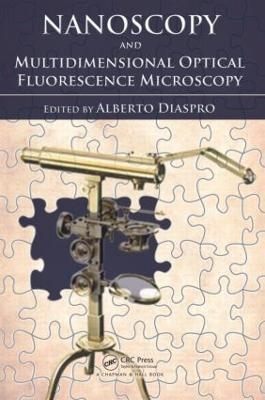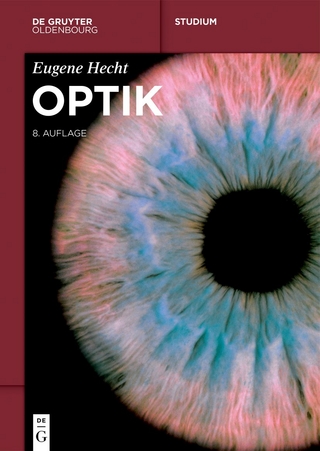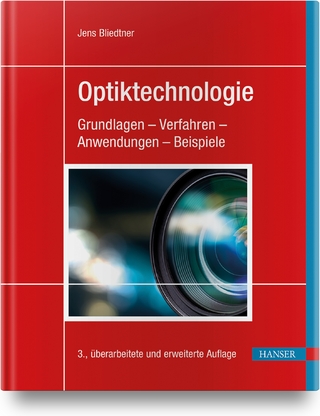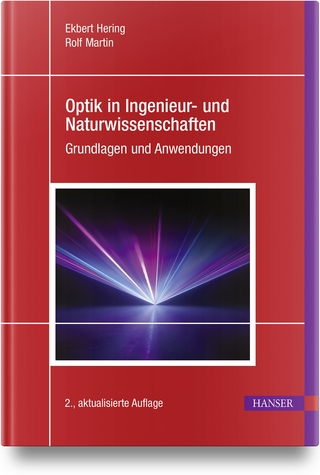
Nanoscopy and Multidimensional Optical Fluorescence Microscopy
Seiten
2010
Chapman & Hall/CRC (Verlag)
978-1-4200-7886-2 (ISBN)
Chapman & Hall/CRC (Verlag)
978-1-4200-7886-2 (ISBN)
Describes how scientists have exploited the properties of light and its fluorophore partners to overcome the resolution limit of conventional light microscopy. This title considers the methods for improving three-dimensional optical sectioning microscopy. It reviews the basics of FRET (fluorescence resonance energy transfer).
"Alberto Diaspro has been choreographing light’s dance for over 20 years,
and in Nanoscopy and Multidimensional Optical Fluorescence Microscopy, he has assembled a diverse group of experts to explain the methods they use to coax light to reveal biology’s secrets."
— From the Foreword by Daniel Evanko, editor, Nature Methods
Nanoscopy and Multidimensional Optical Fluorescence Microscopy demonstrates that the boundaries between sciences do blur at the bottom, especially those that might separate the optical work of physicists and the cellular work of microbiologists. In 18 chapters written by pioneering researchers, this work offers the first comprehensive and current documentation of the cutting-edge research being accomplished in a wide range of photonic devices with revolutionary application.
The highlight of the book is its coverage of optical nanoscopy and super-resolution microscopy. The rapid advances in this area over the past few years offer researchers in both photonics and molecular biologya wealth of accomplishment upon which they can build.
Offering a complete treatment of this emerging field, this volume:
Describes how scientists have exploited the properties of light and its fluorophore partners to overcome the resolution limit of conventional light microscopy
Delves into recent ways to minimize the photobleaching that has long hampered many methods including those that have the potential to capture previously unobtainable information on the movements of single molecules
Discusses the principles, benefits, and implementation of fluorescence correlation spectroscopy and related methods, which simplifies analysis by limiting light to stationary focal points in a sample
Considers the most basic as well as emerging methods for improving three-dimensional optical sectioning microscopy
Reviews the basics of FRET (
"Alberto Diaspro has been choreographing light’s dance for over 20 years,
and in Nanoscopy and Multidimensional Optical Fluorescence Microscopy, he has assembled a diverse group of experts to explain the methods they use to coax light to reveal biology’s secrets."
— From the Foreword by Daniel Evanko, editor, Nature Methods
Nanoscopy and Multidimensional Optical Fluorescence Microscopy demonstrates that the boundaries between sciences do blur at the bottom, especially those that might separate the optical work of physicists and the cellular work of microbiologists. In 18 chapters written by pioneering researchers, this work offers the first comprehensive and current documentation of the cutting-edge research being accomplished in a wide range of photonic devices with revolutionary application.
The highlight of the book is its coverage of optical nanoscopy and super-resolution microscopy. The rapid advances in this area over the past few years offer researchers in both photonics and molecular biologya wealth of accomplishment upon which they can build.
Offering a complete treatment of this emerging field, this volume:
Describes how scientists have exploited the properties of light and its fluorophore partners to overcome the resolution limit of conventional light microscopy
Delves into recent ways to minimize the photobleaching that has long hampered many methods including those that have the potential to capture previously unobtainable information on the movements of single molecules
Discusses the principles, benefits, and implementation of fluorescence correlation spectroscopy and related methods, which simplifies analysis by limiting light to stationary focal points in a sample
Considers the most basic as well as emerging methods for improving three-dimensional optical sectioning microscopy
Reviews the basics of FRET (
Alberto Diaspro
Optical Microsopy and Nanoscopy. Basis if Fluorescence Spectroscopy. Basis of Optics for Microscopy. Scanning Microscopy at the Nanoscale. 3D Computational Optical Sectioning Microscopy. Multiphoton Microscopy at the Nanoscale. Confocal Microscopy at the Nanoscale. 7D Microscopy. Lifetime Imaging Microscopy. Fluorescence Correlation Spectroscopy. FRET/FRAP. Single Molecule Microscopy. Single Particle Tracking (SPT). Fluorescent Probe. Fluorescence Photoactivation and Photoswitching. Fluorescent Nanotubes and Nanowires. Scattering Processes. SHG/THG (Second/Third Harmonic Generation) Microscopy. Near Field Microscopy. TIRF (Total Internal Reflection Fluorescence) Microscopy.
| Erscheint lt. Verlag | 5.5.2010 |
|---|---|
| Sprache | englisch |
| Maße | 178 x 254 mm |
| Gewicht | 952 g |
| Themenwelt | Naturwissenschaften ► Physik / Astronomie ► Optik |
| Technik ► Elektrotechnik / Energietechnik | |
| Technik ► Umwelttechnik / Biotechnologie | |
| ISBN-10 | 1-4200-7886-0 / 1420078860 |
| ISBN-13 | 978-1-4200-7886-2 / 9781420078862 |
| Zustand | Neuware |
| Informationen gemäß Produktsicherheitsverordnung (GPSR) | |
| Haben Sie eine Frage zum Produkt? |
Mehr entdecken
aus dem Bereich
aus dem Bereich
Grundlagen - Verfahren - Anwendungen - Beispiele
Buch | Hardcover (2022)
Hanser, Carl (Verlag)
49,99 €
Grundlagen und Anwendungen
Buch | Hardcover (2023)
Hanser, Carl (Verlag)
59,99 €


